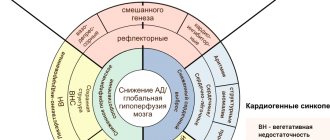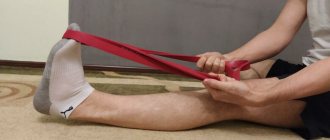Tourette's syndrome (Tourette's disease, Gilles de la Tourette's syndrome, or simply TS or Tourette) is a hereditary neuropsychiatric disease that begins in childhood. It is characterized by multiple physical (motor) tics as well as at least one auditory tic. These tics usually wax and wane, are preceded by some impulses, and it is also possible to temporarily suppress them. Tourette's is considered a type of tic disorder and is characterized by the presence of temporary, intermittent, or persistent (chronic) tics.
The main cause of Tourette's syndrome is genetics. Among the main signs of the disease: obsessive repetitions of the same movements, tics and other behavioral disorders. The strength of these symptoms may vary. The mild course of the syndrome is almost imperceptible, but there are also much more complex cases.
The first signs of the disease appear in children at an early age: from 2 to 5 years. Sometimes the disease manifests itself in adolescents aged 11-18 years.
The first mentions of similar symptoms can be found in the works of medieval doctors, but the syndrome was classified as a separate disease by Georges Gilles de la Tourette.
Stages of Tourette's syndrome
Patients are diagnosed in 4 stages:
- Light. In this case, the syndrome may be invisible even to loved ones. A person is in complete control of his behavior. Tics may not be observed for a long time.
- Moderate. Sometimes emotional stress increases so much that the patient cannot control the attack.
- Expressed. During attacks, a person with this stage almost completely loses control. It is difficult for him to live in society. It becomes almost impossible to work and solve everyday problems.
- Heavy. The attacks are uncontrollable. Such patients are often diagnosed with incapacity.
Modern diagnostic methods do not guarantee 100% detection of the disease. Doctors often make this diagnosis if, in addition to external manifestations, the patient had family members with similar problems.
Classification of Tourette's syndrome
Tics are sudden, repetitive, irregular movements (motor tics) caused by the contraction of individual muscle groups. Motor tics are based on movement, while speech tics involve the involuntary production of sounds through the nose, mouth or throat.
The DSM-IV-TR classified Tourette Syndrome as one of several tic disorders that "often manifest in infancy, childhood, or adolescence" and are categorized by type (motor or vocal tics) and duration (temporary or chronic). Temporary tics manifest as multiple motor or vocal tics (sometimes both) over a period of four weeks to twelve months. Chronic tics can be single or multiple, motor or auditory (but never both), which appear for more than a year.
Tourette syndrome can be diagnosed if there are constant motor tics and at least one vocal tic for a year. The DSM-5, published in May 2013, reclassified Tourette syndrome and tic disorders as movement disorders classified as neurodevelopmental disorders, and replaced transient tics with temporary tics. In addition, several other significant changes have been made.
Tourette syndrome is classified in almost the same way in ICD-10, which was compiled by the World Health Organization. In this classification, multiple auditory and motor tics (Tourette's syndrome) were coded F95.2. Although Tourette's is the most severe of all tic disorders, most cases of the disease are fairly mild. Symptoms of patients vary greatly and a moderate form of the disease may not be noticed at all.
Description
Tourette's syndrome is classified as a genetically determined disorder of the nervous system. This pathology is characterized by multiple motor tics, varied in form, as well as sound equivalents. They are repeated many times during one day. Often this disorder is combined with attention deficit hyperactivity disorder, as well as obsessive-compulsive disorder.
This disease was first described in works on medicine in the Middle Ages. Georges Gilles de la Tourette in the 19th century described this disease in detail and classified its forms. He systematized the clinical manifestations of the disease in nine patients.
There are four degrees of severity:
- Easy. Manifestations of the disease are practically invisible, patients control them while in society. Symptoms may not be detected for a short time.
- Moderately expressed. Motor tics with vocalizations are noticeable. The patient maintains self-control. Manifestations of the disease are constantly present.
- Expressed. Tics are pronounced. Patients have to make enormous efforts to control them.
- Heavy. Manifestations of the syndrome are pronounced. The patient is unable to control them.
The disease often debuts in childhood, between the ages of two and five years. Less often, its first signs appear in teenagers. With age, clinical manifestations weaken or disappear. This usually occurs in people over 20 years of age. It is four times more common in boys than in girls.
Manifestations of Tourette's syndrome
The main manifestation of Tourette's syndrome is motor and vocal tics, which first appear in children between 2 and 5 years of age. In turn, tics can be simple or complex.
Motor tics
Simple motor tics do not last long and are performed by one muscle group. This may be involuntary frequent blinking, sniffing, pulling out lips, grimacing, shrugging, twitching of hands, scratching, frowning, twitching of the head, clanking of teeth, etc.
Complex motor tics include: jumping, touching an object or person or parts of one's body, hitting one's head against a wall, pressing on the eyeballs, sharply throwing one's legs forward, clapping one's hands, biting one's lips until they bleed, making obscene gestures, and the like.
Vocal tics
Vocal tics in Tourette syndrome are as diverse as motor ones. Simple vocal tics can be manifested by repetition of meaningless sounds and syllables, whistling, puffing, screaming, mooing, hissing. When intertwined with the flow of speech, vocal tics can create the false impression of hesitation, stuttering, and other speech impediments. An obsessive cough and sniffling are often mistakenly perceived as manifestations of allergic rhinitis, sinusitis, or tracheitis. Sound phenomena that accompany the course of Tourette's syndrome also include echolalia (repetition of heard words), palilalia (multiple repetition of the same own word), coprolalia (shouting obscene, swear words). Vocal tics are also manifested by changes in rhythm, tone, accent, volume, and speed of speech.
Treatment of Tourette's disease at Sarklinik
Based on the results of the work of Sarklinik (Saratov, Russia), it was established that complex differentiated treatment of patients with de la Tourette’s disease with the widespread use of new reflexology techniques allows one to achieve satisfactory results even with pronounced hyperkinesis and vocalisms. Thus, out of 704 patients with Tourette's syndrome aged from 3 to 47 years with varying degrees of severity of clinical manifestations, after repeated courses of restorative treatment, hyperkinesis and vocal disorders disappeared in 571 patients (81.1%).
How do you get Tourette's syndrome?
No clear reasons have been identified. In addition to the genetic component, doctors also talk about additional factors.
An autoimmune cause is often cited: many patients have previously suffered from streptococcal diseases. Brain dysfunction is another reason. The syndrome is associated with dysfunction of the thalamus, basal ganglia and pathologies of the frontal lobes. Many adults and children diagnosed with the disorder have elevated dopamine levels. Metabolic disorders can also trigger the onset of the disease.
Diagnosis of Tourette's disease
Diagnosis of Tourette's disease is based on collecting anamnesis (presence of relatives with this disease), characteristic symptoms that have been present for a year or more.
At the first visit of a patient with Tourette's syndrome, a neurological examination is performed, the purpose of which is to exclude organic brain damage (tumor). To do this, the patient undergoes computed tomography, nuclear magnetic resonance and electroencephalography. A biochemical blood test is also examined to exclude metabolic disorders.
Differential diagnosis is carried out with many diseases (Wilson-Konovalov disease, Huntington's chorea, juvenile form of Parkinson's disease, rheumatic chorea and others).
Treatment of Tourette's disease in Saratov, Russia
As a result of complex treatment of Tourette's disease syndrome at Sarclinic, the activity of dopaminergic systems of the brain is normalized, the content of acetylcholine in the blood is reduced, the activity of enzymes that destroy acetylcholine is restored, the activity of cholinoreactive systems is increased, the activity of monoamine oxidase in the blood, the exchange of biogenic amines and catecholamines is restored. There is a disappearance or significant decrease in the clinical manifestations of the disease - hyperkinesis and vocal disturbances, tics .
How are they treated?
Cognitive behavioral therapy and psychological and pedagogical consultation are widely used. Only if there is no effect, the doctor can prescribe the use of medications.
In all cases, preference is given to non-drug methods: acupuncture, segmental reflex massage, laser reflexotherapy, exercise therapy, etc. The main method of treating Tourette syndrome is psychotherapy, which allows one to cope with emerging emotional and social problems. Promising methods for treating Tourette's syndrome are biofeedback therapy, injections of botulinum toxin to prevent vocal tics, etc.
Psychotherapy plays the main role in the treatment of Tourette syndrome, both with the child and his parents. The patient must be instilled with an adequate attitude towards his condition and the absence of inferiority. Special games, therapeutic communication with animals, and active physical rest are used.
Course and prognosis of Tourette's syndrome
When treated for Tourette's syndrome, half of patients experience improvement or stabilization in late adolescence or adulthood. If persistent generalized tics persist and cannot be controlled, lifelong drug therapy is required.
Despite its chronic course, Tourette syndrome does not affect life expectancy, but can significantly worsen its quality. Patients with Tourette syndrome are prone to depression, panic attacks, and antisocial behavior, and therefore need understanding and psychological support from others.
This syndrome should not negatively affect your life. There are many people known to suppress its symptoms. For example, the now mega-popular singer Billie Eilish, who has been diagnosed with Tourette syndrome, shows that it is quite possible to live with this.
Tim Howard also serves as an excellent example that this disorder is not a death sentence. For those who don't know, this is an American goalkeeper. Moreover, the goalkeeper is not bad. He played for Manchester United and Everton, and was also a goalkeeper for the US national football team. And everywhere he acted as the main goalkeeper.
Synonyms and code in ICD 10
Tourette's syndrome is otherwise called: Tourette's disease, Tourette's disorder, Gilles De La Tourette's syndrome, F 95.2 in the International Classification of Diseases (ICD-10).
What is this
Tourette's syndrome is a condition that can develop at any age. Mild forms of the disease can occur in such a way that the patient and his relatives do not even seek help, considering muscle twitching and shouting to be peculiarities of the body. In general, the prevalence of this disorder is about 1% of the entire population; it is 3 times more common in men than in women.
Causes
The reasons have not been fully established, but it is known that hereditary factors play a major role. In addition, there is evidence indicating a genetic link with another mental illness, obsessive-compulsive disorder (OCD). Minimal organic damage to brain tissue in the early stages of development is also a risk factor for the development of tics. The development mechanism is associated with changes in the functioning of the subcortical structures of the brain (thalamus, basal ganglia), impaired exchange of neurotransmitters, which causes foci of overexcitation, manifested by tics.
Symptoms
The main manifestations are tics in the form of muscle twitching and sounds. Tics can vary in strength, location and content, intensity and time. Overexcitement, strong emotions and experiences can intensify tics; in sleep, as a rule, these symptoms are not present. The most noticeable and unpleasant symptom is coprolalia. It manifests itself in the form of shouting obscene or abusive words, sometimes accompanied by pretentious and unpleasant facial expressions and gestures.
The first manifestations of the disease can occur as early as preschool age. Tourette's syndrome is characterized by repeated "individual" tics for each patient, which sometimes can be temporarily suppressed by internal tension. But, as observations show and the patients themselves admit, with all the understanding of the wrongness and unacceptability of such actions, it is not possible to remove them by an effort of will. Before the tic itself, a difficult to describe and uncontrollable tension arises, which, like a “discharge,” is turned off by muscle contraction or shouting.
Intellect and other cognitive functions are not impaired in Tourette syndrome.
Treatment
Mild forms of the disease are treated at home using psychotherapeutic exercises and restorative therapy. An important role is played by teaching relatives the correct behavior towards the patient and knowledge of the main features of this disorder.
In moderate and severe cases, hospitalization in a specialized hospital for examination and intensive treatment may be required. The following methods are used in the treatment of Tourette syndrome:
- Pharmacotherapy (neuroleptics, antidepressants, neurometabolic therapy).
- Psychotherapy (individual, group).
- Physiotherapy.
- Biofeedback therapy.
- Occupational therapy.
- Exercise therapy and massage.
- Diet therapy.
- Music therapy. Art therapy.
- Botulinum therapy.
Treatment is selected taking into account the individual characteristics of the patient. In most cases, patients who came to our clinic with symptoms of this disorder were identified with concomitant mental disorders: depression, panic attacks, obsessive phenomena, consequences of organic damage to the nervous system, addiction, etc. In these cases, complex treatment of Tourette syndrome and associated disorders.
Treatment of Tourette's syndrome at the ROSA Clinic:
- We work around the clock.
- We have our own hospital for examination and treatment of complex cases.
- Experienced doctors in the field of helping patients with hyperkinesis and tics: neurologist, psychiatrist, psychotherapist, clinical psychologist. A specialist will visit your home. Consultations at the clinic. Remote consultation (telephone, internet, video consultation). Hospitalization.
- All possibilities for diagnosis and effective treatment have been created.
- Psychoeducational work with relatives.
- We accept children, teenagers and adults.










